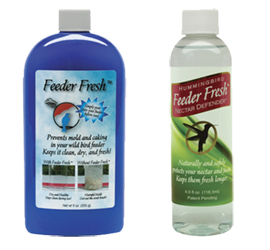View all of the titles in the
NatureSmart Bookstore

by Stan Tekiela
© NatureSmart
July 10, 2023
When is a duck not a duck? The answer is…. when it is a merganser. So, what is a merganser? The mergansers are fish eating ducks with many different adaptations that make them very different from ducks, yet they are considered in the duck group. So, let’s take a look at the Common Merganser (Mergus merganser).
The Common Merganser is a wide-ranging species in the northern hemisphere around the world. They are considered seaducks, but Common Mergansers prefer fresh water. They can be found in Europe, Asia and North America. Here in America, they are often seen on large freshwater lakes and larger rivers such as the Mississippi and Missouri Rivers.
The Common Merganser is a large body bird that rides low in the water and looks superficially like a duck. The male has a large, sleek, and round green head and white body. Its wings are dark. They are over 2 feet long with a wingspan just over 3 feet. Males are larger than females with a male weighing in at nearly 5 pounds and females closer to 3 pounds. Females look remarkably different from the males. Females have a rusty red head with a white chin. They both have a long, narrow, orange bill.
One of the big differences from other ducks is mergansers are fish eaters which is called piscivorous. But catching fish underwater isn’t an easy task. Consider the fact that they need to swim fast enough underwater to catch a fish. Once they have caught up to the fish, they need to be able to grab it and hang onto the slippery prey. To do this, Common Mergansers have serrated edges to their bills. Remember birds don’t have teeth so in order to hang onto a very slippery fish underwater they needed something similar to teeth (see photo). The serrated bill makes mergansers very unique in the bird world. Their bill has also given them another common name the “sawbill”. In addition to fish, they also eat other aquatic prey such as crayfish, aquatic insects, and amphibians.
Just like Wood Ducks the Common Merganser nests in tree cavities. The size of the Common Merganser makes finding a large enough tree cavity a little challenging. They will take advantage of a large wooden human made nest box if it has a big enough entrance hole. Like other mergansers, the Common Merganser will form creches. This is when one female will watch over her ducklings but also babysit other female’s ducklings. One female has been seen with over 70 baby mergansers at one time.
Females lay upwards of 12 eggs and usually only has one brood per season. Incubation takes a little more than one month, and the young mergansers are well developed upon hatching and are ready to leave the nest within 24 hours of hatching.
Along with Common Loons, the Common Merganser is one of the few birds that can live on both fresh and salt water. This might not be something you think is interesting but the ability to switch from fresh to salt water is very unique. Most birds are specialists and will be adapted to either fresh or salt water, but not both.
They can dive underwater for upwards of 2 minutes, but most dives are less than 30 seconds. It all really depends upon the abundance of fish. The more fish the less time underwater and the fewer fish the longer they need to be underwater hunting.
Just like other duck species, the male abandons the female once she starts to incubate the eggs. The female will incubate and care for the ducklings on her own. Nests can be located upwards of 100 feet high in a tree and over a mile from any body of water. The young will follow the female once they jump from the nest.
I find the Common Merganser and the other mergansers to be absolutely amazing. I like how they are a duck yet very different from other ducks. I guess I just like the rule breakers in nature. Until next time…
Stan Tekiela is an author / naturalist and wildlife photographer who travels the U.S. to study and capture images of wildlife. He can be followed on www.facebook.com and www.instagram.com. He can be contacted via his web page at www.naturesmart.com.
The nationally syndicated NatureSmart Column appears in over 25 cities spanning 7 states: Minnesota, Wisconsin, Michigan, Illinois, Ohio, New York and Pennsylvania. It is a bi-weekly column circulated to over 750,000 readers.
Horned Lark
The overall population of ground nesting birds is steadily going down. Here in North America, we have hundreds of bird species who nest directly on the ground. Prairie birds such as Eastern and Western Meadowlarks are a good example. If you are older than 50 you most likely remember hearing...
Sharp-tailed Grouse
The rights of spring come in many different forms, shapes, colors, and patterns. But the end goal is always exactly the same—reproduction. In nature, everything can be boiled down to one of two things, finding food to survive and mating for reproduction. It’s as simple as...
Greater Prairie Chicken
I am not a stranger to getting up at O’ dark thirty, to be able to get out and capture some images of wildlife. Over the past 40 years I would say it is definitely in the hundreds if not thousands of times I’ve dragged myself out of bed so early. So, last week when the alarm went off...
Marsh Rabbit
For me, I enjoy all aspects of nature, not just birds. I find all of nature fascinating and that is what keeps me interested. So, while leading a photo tour to Florida recently I was so excited to see a crazy cool critter that isn’t what you expect when you see it. A true rule...
Each year, during June and July, Stan Tekiela offers two world-class wildlife photography tours. Here's your chance to learn some tricks of the trade from a top professional.
View all of the titles in the
NatureSmart Bookstore
Check out Stan's latest photos at
NatureSmart Wildlife Images
Do you have any interesting wildlife in your backyard? Any nesting birds, deer, turkeys, reptiles, amphibians, or other unique wildlife? Or maybe a fox or coyote den?
If so, contact Stan at stan@naturesmart.com with your backyard wildlife. If he can get a good photo of the subject, he will send you a print of the photo to hang on your wall.
Order Prints and posters of Stan's photos at
» Prints & Posters
Hear Stan on radio stations all across the Midwest.
» More Info

When he's out in the field, Stan relies on his Vortex Razor binoculars and Vortex Razor spotting scope to help find the subjects for his award winning wildlife photography.

For thirty years, professional wildlife photographer Stan Tekiela has counted on Hunt's Photo and Video to provide him with professional photography equipment.
From tripods to camera bodies and lenses, Hunt's has been Stan's place for everything that he needs. Personal service and prompt shipping means Stan can count on Hunt's to support his professional wildlife photography career.


Professional Wildlife Photographer Stan Tekiela always uses Feeder Fresh in his seed feeders to help keep the feeders and food dry, clean and mold free.
He also uses Feeder Fresh Nectar Defender in all of his hummingbird feeders. It safely keeps nectar fresh longer.